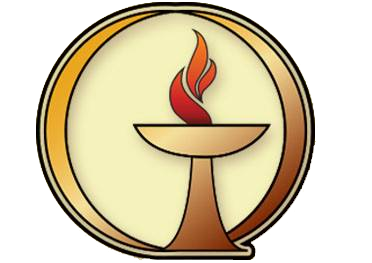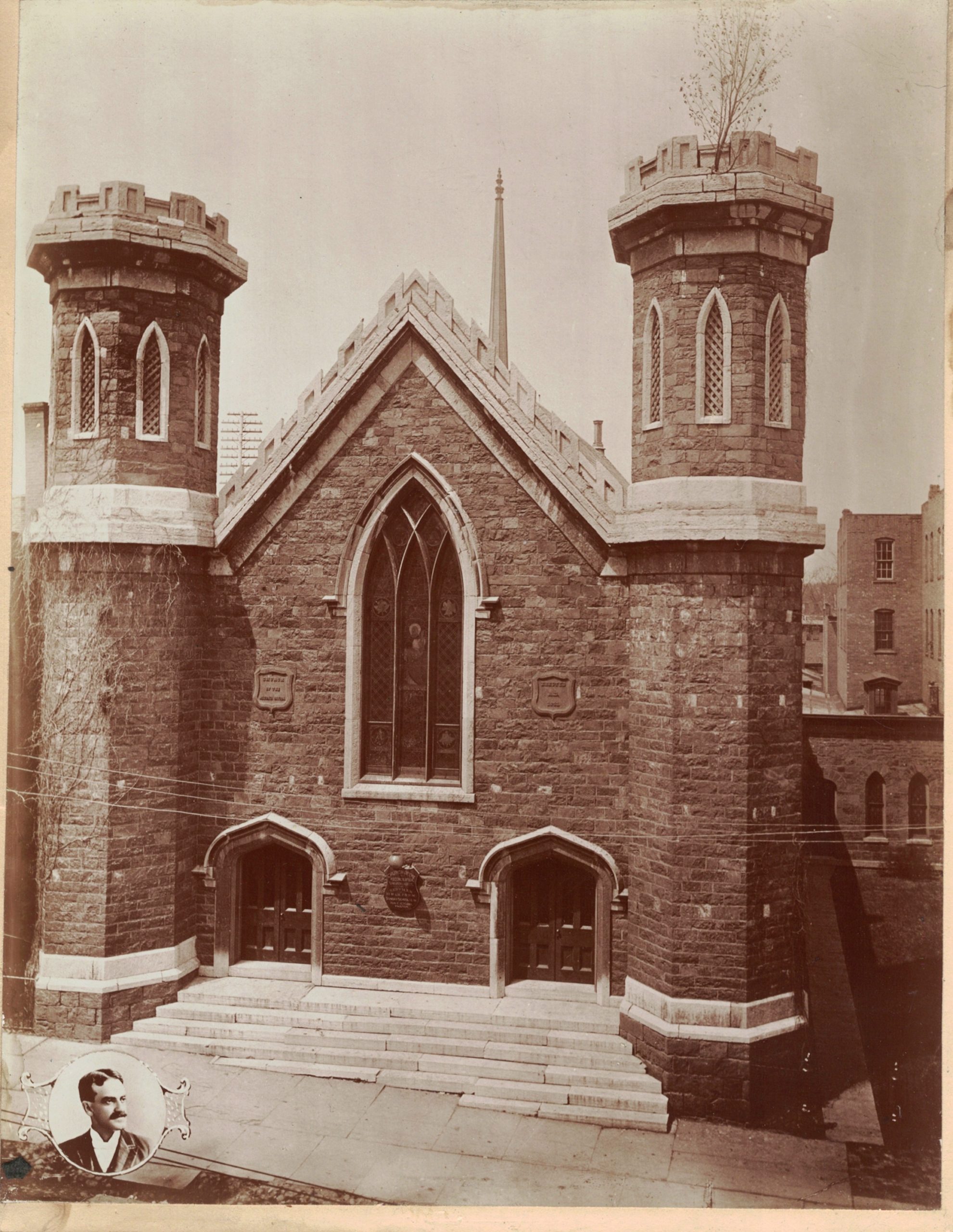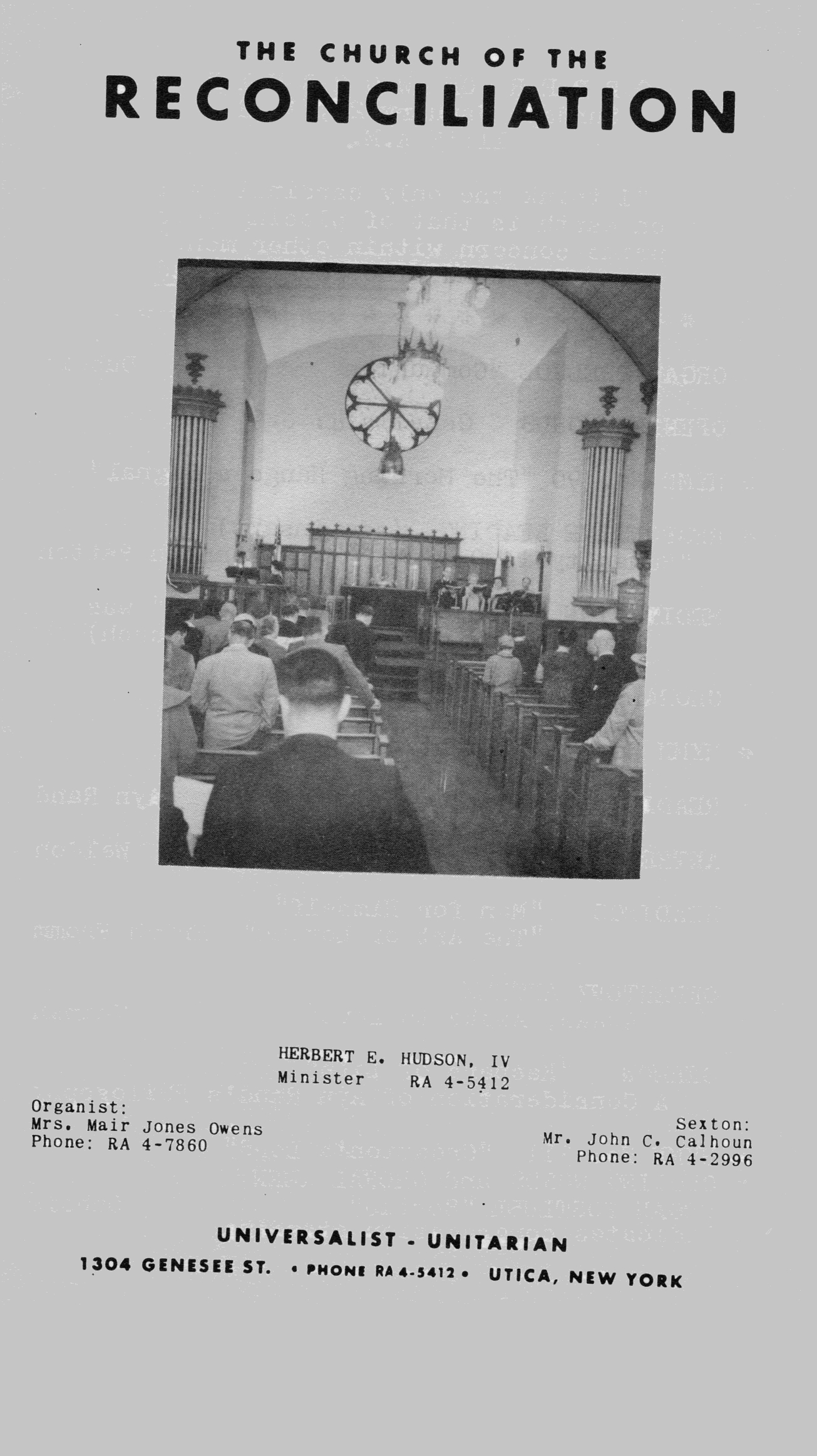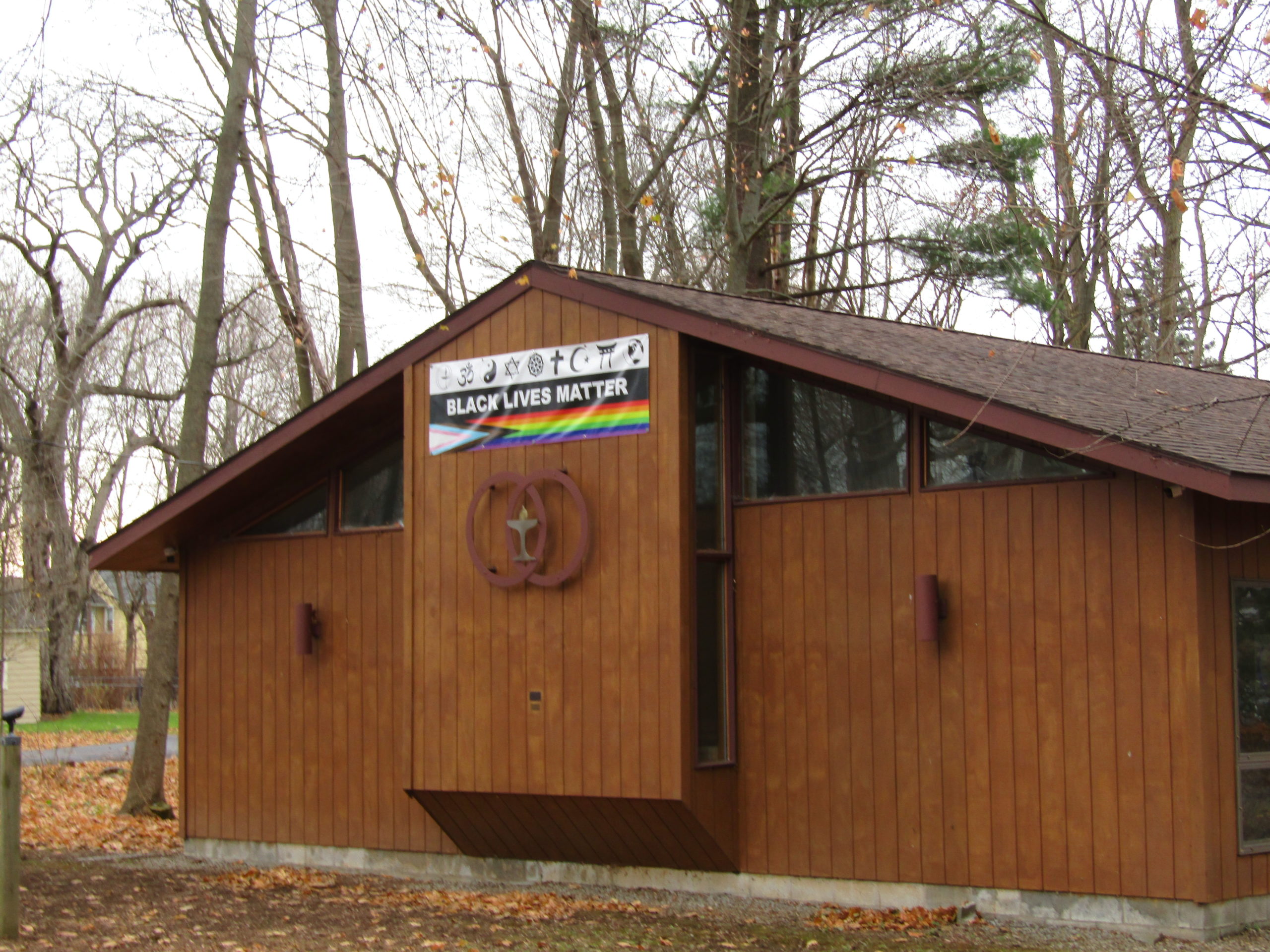History of UU Utica
Above is a slide show. Click to the left or right of the photo above to move through the slide show.
The history of the current congregation began in 1825. The founding members numbered forty-two including five women. All were entitled to vote, though it was unusual to include women in voting at that time. Prosperous members included Andrew S. Pond, head of an iron foundry, and Esra Barnum who owned a business that supplied boats for the Erie Canal and was appointed a U.S. Marshall. These benefactors made it possible to build a meeting house at the corner of Genesee and Devereaux Streets.
1825 – Erie Canal completed from Lake Erie to the Hudson River. Utica is a relatively small incorporated village. Utica wouldn’t become a city until 1832. Utica Public Library established. The First Universalist Society of Utica formed at a time when there were only sixteen Catholic families living in Utica.
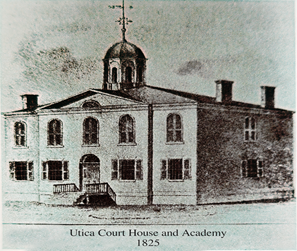
1825 to 1828 – Services held at the Utica Court House and Academy (forerunner to Utica Free Academy)
1828 – First church building constructed at 4 Devereux Street on land purchased from Nicholas Devereux. It measured 40 by 65 feet, about the size of our current sanctuary.
1845 – Church building at 4 Devereux Street is given up due to a mortgage issue. The building later burns down. The State Office Building today occupies the entire city block.
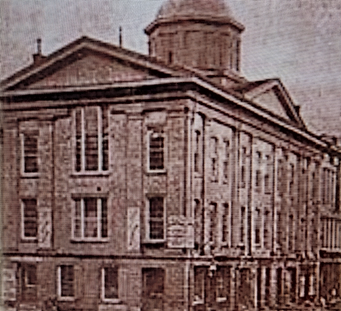
1845 – 1853 – Utica – Universalists gather for services at Mechanics Hall, Hotel at Liberty Street across from Gerber’s Tavern. Women’s rights advocates Susan B Anthony, and Universalist Minister Olympia Brown, the first woman ordained to any denomination, spoke here. As did William Lloyd Garrison and Solomon Northup, author of Twelve Years a Slave.
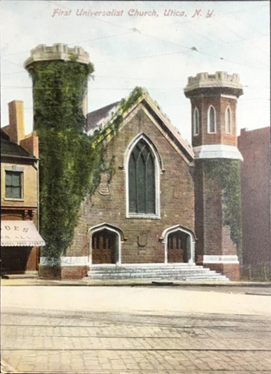
1853 – A new church on Seneca Street is constructed and will be home for the Utica Universalists for the next 50 years and will be known as The First Universalist Church of Utica.
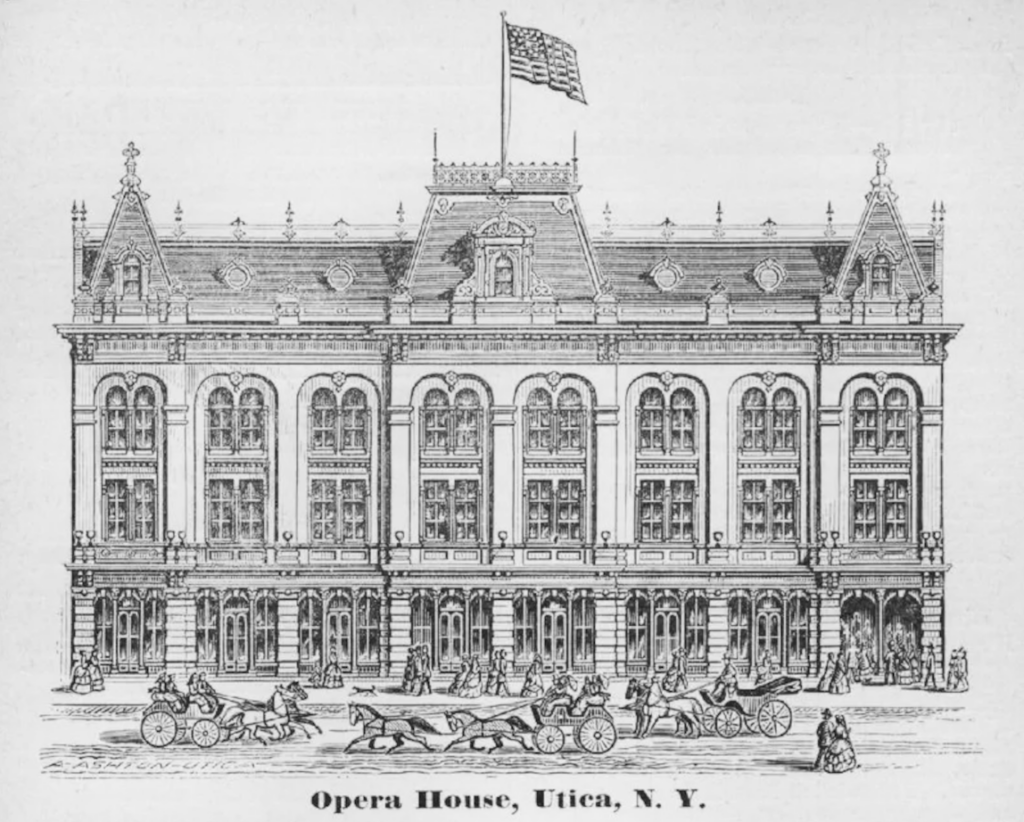
1870’s – The number of people wanting to attend Universalist services exceeded the church’s capacity and extra services were held at the Utica Opera House.
1903 – Fire destroys the front of the Seneca Street church, several stained glass windows and the church organ.
About 1904 – 05 – Andrew Carnegie contributes money to replace the fire-damaged organ.
1906 – The Seneca Street church building and property are sold to make way for a new building housing Citizens Bank, and later would become the site of The Marine Midland Bank/HSBC, now the Landmarc building.
1906 – The Comstock home at Genesee and Tracy Streets is purchased and would become the parish house. That same year the Utica Universalists laid the cornerstone for a new church to be built in front of Comstock House.

1907 – First Universalist Church of Utica opens at 1304 Genesee St. and would serve the congregation until 1978. Greta M. Worstell (Crosby) would be the church’s first woman minister in 1960. Alex Haley, Roots author and anti-war activist Fr. Daniel Berrigan would speak here.
1926 – Utica Universalists invite Unitarians to join the congregation and it becomes Church of Reconciliation-Universalist Unitarian. That would precede the national merger of the two churches by 35 years.
1946 – Church of Reconciliation rents space in the church basement and first floor of the parish house to a very young Utica College of Syracuse University which had established its home on Oneida Square.
1959 – Utica Council of Churches severs membership of Church of Reconciliation because it could not acknowledge “Christ as divine Lord and Savior” and thereby did not meet its membership requirements.
1978 – Church of Reconciliation building is sold and the congregation constructs a new environment friendly building at 10 Higby Road and is renamed:
The Unitarian Universalist Church of Utica.
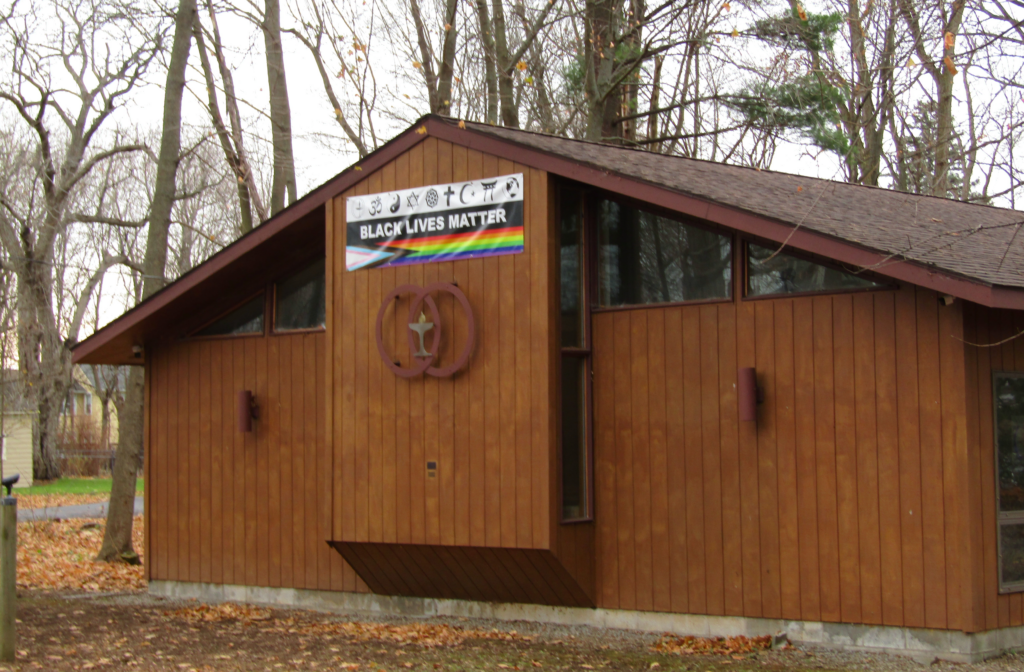
History of Ministers
- John S. Thompson 1825-1826
- Dolphus Skinner 1827-1832
- Aaron Grosh 1832-1838
- T.D. Cook 1839-1842
- H.B. Soule 1843-1844
- Eben Francis 1849-1853
- Theophilus Fisk 1853-1856
- C.C. Gordon 1856-1859
- T.D. Cook 1860-1864
- D. Ballou 1864-1869
- A.J. Canfield 1870-1873
- C.F. Lee 1875-1879
- E.F Foster 1879
- M. Crossley 1880-1882
- O.A. Rounds 1882-1887
- Clarence E. Rice 1887-1892
- Caleb E. Fisher 1893-1895
- Frank Leland 1896-1899
- James D. Corby 1899-1906
- John Sayles 1905-1907
- George Cross Baner 1907-1914
- William C. Selleck 1915-1919
- Leslie C. Nichols 1920-1925
- Thomas J. Saunders 1925-1929
- Alfred S. Cole 1929-1931
- Stanart Dow Butler 1931-1935
- Robert Killam 1935-1941
- Alfred Lynn Booth 1942-1944
- John Stewart MacPhee 1945-1952
- T. Conley Adams 1952-1956
- Leon S. Simonetti 1957-1959
- Greta M. Worstell (Crosby) 1960-1961
- Herbert E. Hudson IV 1961-1966
- Derek Sparks 1967-1970
- Ralph N. Schmidt – Minister at Large 1971-1980
- Timothy Hume Behrendt 1970-2000
- 2000-2001 Mary Wellemeyer (interim)
- 2001-2004 Kaaren Anderson
- 2004-2005 John Marsh (interim)
- 2005-2007 Naomi King
- 2007-2010 David Blanchard
- 2010-2013 Lucy Ijams
- 2013-2014 David Blanchard
- 2014-2018 Eve Stevens
- 2018-2020 Erin Dajka-Holley
- Rev. Lori Staubitz 2021
- Karen Brammer 2022-2025


Left: Rev. Ralph N. Schmidt Right: Rev. Dolphus Skinner


Left: Rev. Erin Dajka-Holley Right: Rev. Lori Staubitz


Left: Scrip sold to finance early church Right: E.S. Barnum one of the first UU Utica church members


Left: Rev. John MacPhee Right: Timothy Hume Behrendt and Peggy Spencer Behrendt (former music director)


Left: Rev. Lucy Ijams Right: Rev. Naomi King


Left: Kaaren Anderson Right: Rev. Eve Stevens

(Special Thanks to Still Free and Untrammeled by Eleanor (Peg) Hassett, Sally Carman for assistance on this page)
 10 Higby Rd
Utica, NY 13501
10 Higby Rd
Utica, NY 13501



